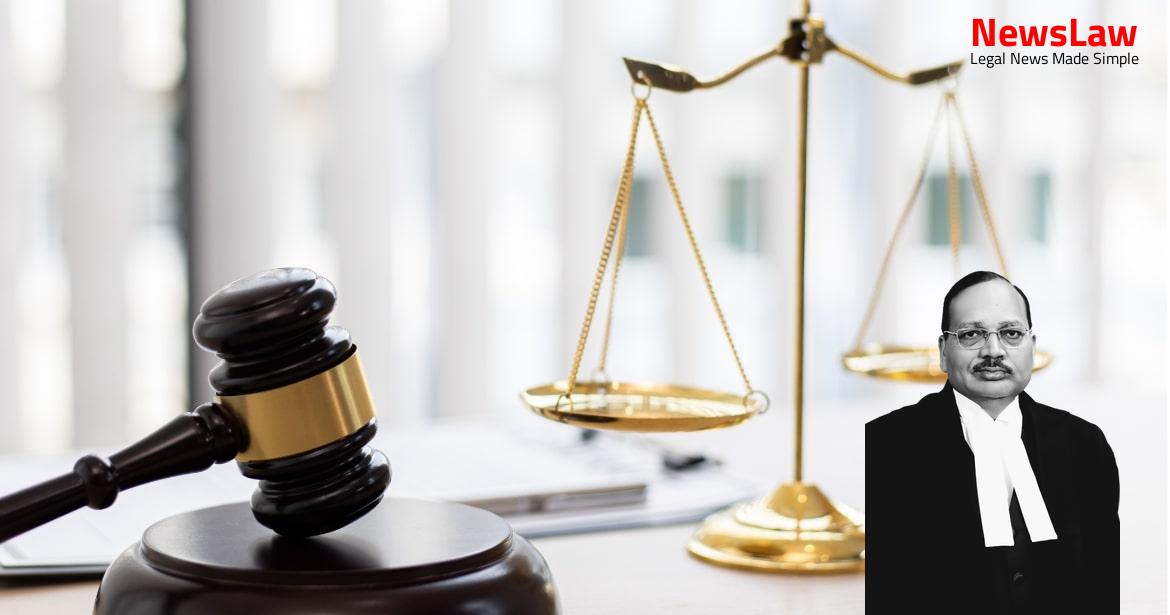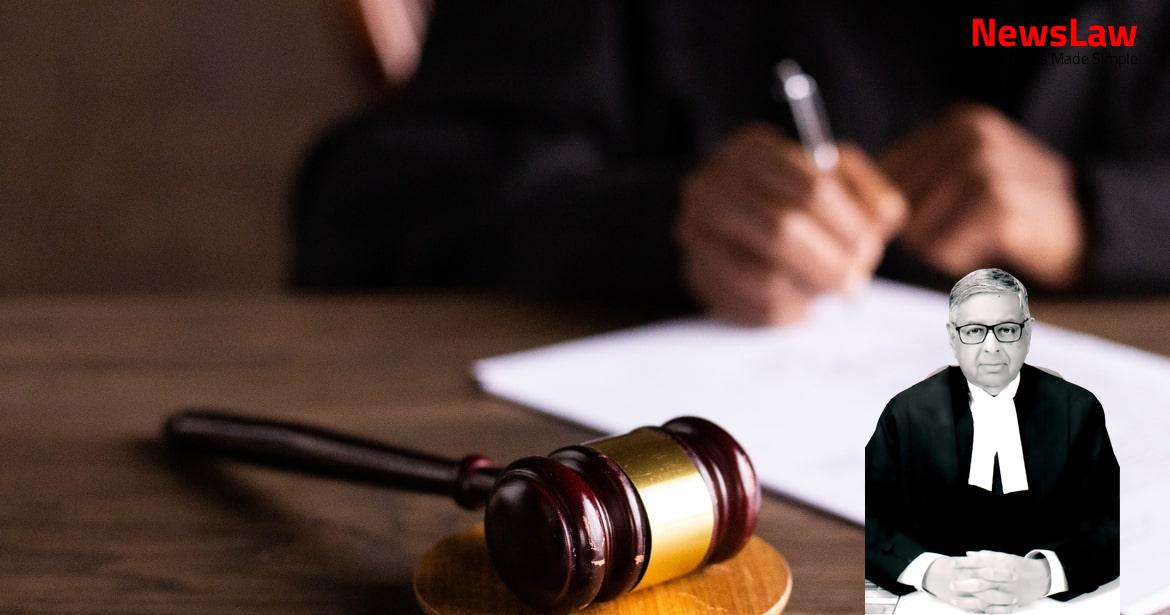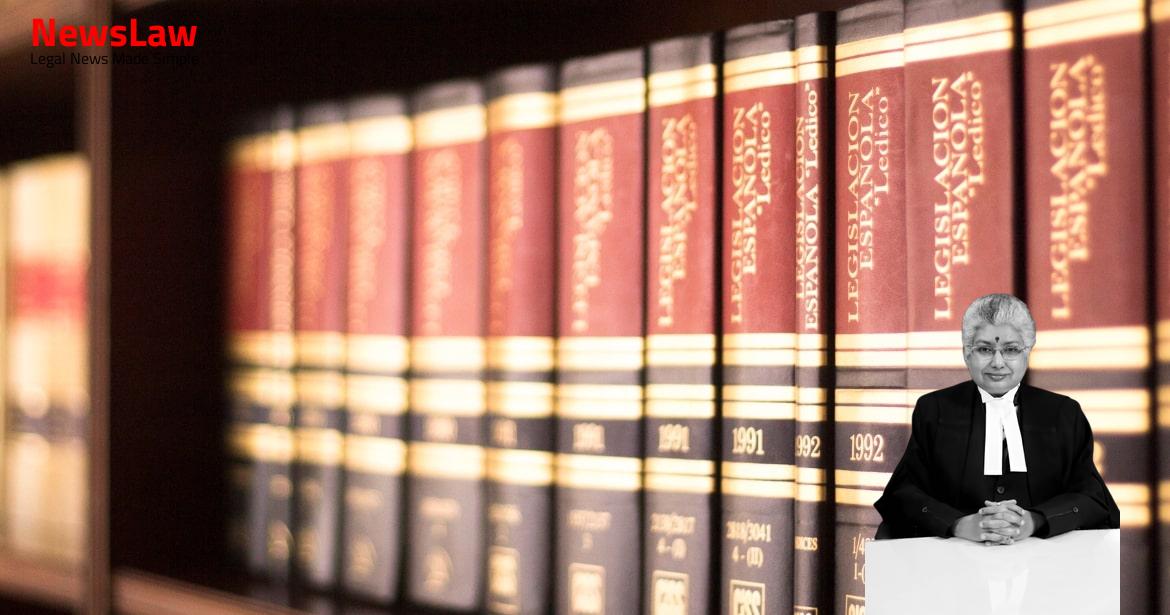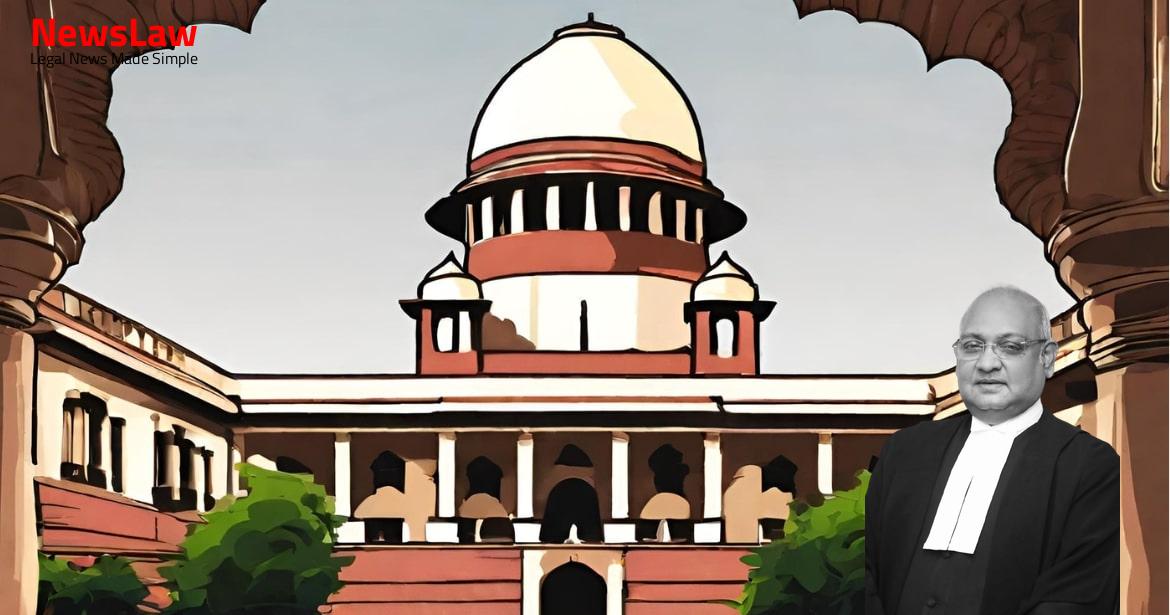In a recent criminal case, the court meticulously analyzed the use of circumstantial evidence to establish guilt beyond a reasonable doubt. The in-depth legal scrutiny emphasized the importance of a complete chain of evidence and the significance of motive, post-occurrence behavior, and other circumstantial factors in corroborating the prosecution’s case. The court’s interpretation of the unique facts of the case highlighted the complexities of invoking the doctrine of circumstantial evidence in criminal proceedings.
Facts
- Appellant No.1 absconded during the enquiries and surrendered only when coercive measures were taken.
- Trial Court found the defense taken by the Appellant to be unconvincing and as an attempt to escape legal punishment.
- Paucity of eyewitnesses made it difficult to explain the circumstances of the deceased’s death.
- The evidence on record fell short of establishing the complicity of certain persons.
- High Court affirmed Trial Court’s findings and upheld the conviction and sentence of the appellants.
- Appellant No.1 exhibited abnormal behavior according to the Trial Court.
- Both appellants were convicted under specific sections of the IPC and sentenced to life imprisonment.
- Judicial notice was taken of false and evasive replies given by Appellant No.1.
- Circumstantial evidence suggested Appellant No.1’s involvement in luring the deceased and the subsequent murder.
- The Trial Court held the circumstantial evidence as clinching and convicted the appellants.
- High Court observed that prosecution witnesses provided stage-wise testimony to prove the case.
- Trial Court emphasized the completion of the chain of evidence to prove guilt in circumstantial evidence cases.
- High Court noted false information provided by Appellant No.1 to a witness.
- PW-12 admitted that the police did not ask him to participate in a T.I.P.
- A seizure list was prepared in the presence of witnesses when the duo went to Dopta village.
- Appellant No.1’s sister was married in Dopta village.
- Appellant No.1 returned to his village Manawan on 10.04.1987.
- Appellant No.1 did not provide credible information about Arun and disappeared.
- PW-12, PW-13, and PW-14 witnessed two persons returning from Kakolat on 09.04.1987.
- PW-16 alleged that Appellant No.1 lured the deceased on the pretext of watching cinema.
- PW-12 identified Appellant No.2 as one of the persons who came to the shop on the night of the incident.
- The doctor conducting the post mortem examination opined that the injuries were sufficient to cause death within 36 to 72 hours.
- The strained relations between the parties were revealed after a Panchayati regarding the deceased’s relationship with Appellant No.1’s sister.
- Charges were framed against the accused under sections 364, 120-B, and 302 read with section 34 of the IPC.
- Various witnesses testified about the movements of the accused and the deceased prior to the incident.
- Evidence of PW-4, PW-16, and PW-17 provided crucial information about the events leading up to the disappearance of Arun.
- A dead body was discovered, and the accused abjured their guilt.
Also Read: Analysis of Suppression of Information in Employment Selection: Legal Perspective
Issue
- Two questions under consideration in the appeal
- Question A: Whether circumstantial evidence in the case establishes guilt beyond reasonable doubt
Also Read: Analysis of Cheating and Forgery in Passport Case
Arguments
- The motive was clearly established in the case.
- No independent witnesses were examined by the prosecution, all witnesses were either relatives or close friends of the complainant party.
- Reference made to section 7A of the Juvenile Justice (Care and Protection of Children) Act, 2000 and the decision in Abuzar Hossain v. State of West Bengal.
- Concurrent finding of guilt by two courts based on examination of evidence.
- Medical examination confirmed death by unnatural means.
- The dead body recovered supports conviction based on circumstantial evidence.
- Questioning the credibility of testimonies of witnesses PW-10 to PW-14.
- Failure of investigating agency to send the recovered knife for forensic examination raised as an issue by Counsel.
- Evidence of PW-3 about deceased’s company two days prior to recovery of the body used to challenge prosecution’s case.
- Arguments made that evidence against Appellant No.2 was weak, relying only on PW-3 and PW-12.
- State Counsel asserted that the chain of circumstances in the case is complete.
- Claim that Appellant No.1 was 17 years old at the time of occurrence.
- Discussion on the ‘last seen alive’ theory as a basis for conviction.
- Casting doubt on the credibility of PW-12’s testimony based on visibility in dark conditions.
- Appellants’ conviction based on circumstantial evidence and lack of eyewitnesses contested.
- Seizures/recoveries made during investigation linked to the involvement of appellants.
- Documentation provided to support Appellant No.1’s age as juvenile at the time of the incident.
- The guilt of the appellants can be inferred from their conduct of luring the deceased under false pretenses and providing misleading information about his whereabouts.
- Material witnesses (PW-1 to PW-14) have corroborated each other’s versions, strengthening the case against the appellants.
- Documents presented by the appellants were not proven as per the Indian Evidence Act and therefore could not be accepted as evidence.
- Citing the case of State of Rajasthan v. Kashi Ram, it was argued that when the deceased was last seen with the accused, a presumption of murder by the accused arises.
- The absence of T.I.P. was stated not to be fatal to the prosecution’s case.
- Patent discrepancies were pointed out in the documents provided by Appellant No.1, raising doubts about their authenticity.
- The plea of Appellant No.1 being a juvenile was raised belatedly, and it was argued that this timing was strategic to avoid contradicting documents.
- Referring to cases like Sukhar v. State of U.P. & Badruddin Rukonddim Karpude v. State of Maharashtra, it was argued that the principles of res gestae apply in this case, making statements made by one witness to another admissible as evidence.
Also Read: Discrepancy in Date of Birth: Court’s Legal Analysis
Analysis
- The case of Prakash Mahto (Appellant No.2) is distinguishable from that of Surajdeo Mahto (Appellant No.1) and the prosecution has not proven the guilt of 2nd Appellant beyond a reasonable doubt.
- Appellant No.2 is entitled to the benefit of doubt.
- The last seen theory should be applied considering the prosecution’s case as a whole, not in isolation.
- The prosecution has led evidence establishing the deceased was last seen alive with both appellants, but further evidence is required to constitute an unbreakable chain of events for conviction.
- Appellant No.1 provided false information and exhibited suspicious post-occurrence behavior, while Appellant No.2 lacks similar incriminating evidence against him.
- The motive of the appellants in the murder has been sufficiently proved by the prosecution, primarily related to the deceased’s alleged affair with Appellant No.1’s sister.
- Motive, post-occurrence behavior, and other circumstantial evidence play crucial roles in corroborating the prosecution’s case.
- The Court emphasizes the importance of examining each case’s unique facts to invoke the doctrine of circumstantial evidence.
- The plea of juvenility raised by Appellant No.1 is discussed, emphasizing the initial burden on the accused to establish prima facie evidence of juvenility.
- The Court is reluctant to re-appraise evidence and question witness credibility in the absence of exceptional circumstances with a concurrent finding of fact.
- A 3-judge bench of the Court in Satpal v. State of Haryana cautioned that the fact of last seen alone is weak evidence without corroboration.
- In the interest of justice, the Court reviewed the evidence to determine if the conviction was sound.
- The standard for recording a conviction based on circumstantial evidence was outlined in Sharad Birdhichand Sarda v. State of Maharashtra.
- The five cardinal principles for establishing guilt based on circumstantial evidence were reiterated, with a complete chain of evidence required to exclude any reasonable doubt of innocence.
- The circumstances considered in this case for the accused’s guilt are last seen theory, motive, and false information given by the appellants.
- The Trial Court record suggests the name of the 1st Appellant is ‘Surajdeo Mahto’ and not ‘Suryadev Prasad’.
- No grounds for conducting a fact-finding enquiry.
- Rejection of the plea of juvenility raised by the 1st Appellant.
- Lack of cogent material indicating that the documents in question pertain to the 1st Appellant only.
Decision
- The bail bonds of the 1st Appellant (Surajdeo Mahto) are cancelled and he is directed to surrender to serve the remainder of the sentence.
- The bail bonds of the 2nd Appellant (Prakash Mahto) are discharged.
- Surajdeo Mahto’s conviction and sentence are upheld, and his appeal is dismissed.
- Prakash Mahto is acquitted of the charges against him.
Case Title: SURAJDEO MAHTO Vs. THE STATE OF BIHAR (2021 INSC 379)
Case Number: Crl.A. No.-001677-001677 / 2011



